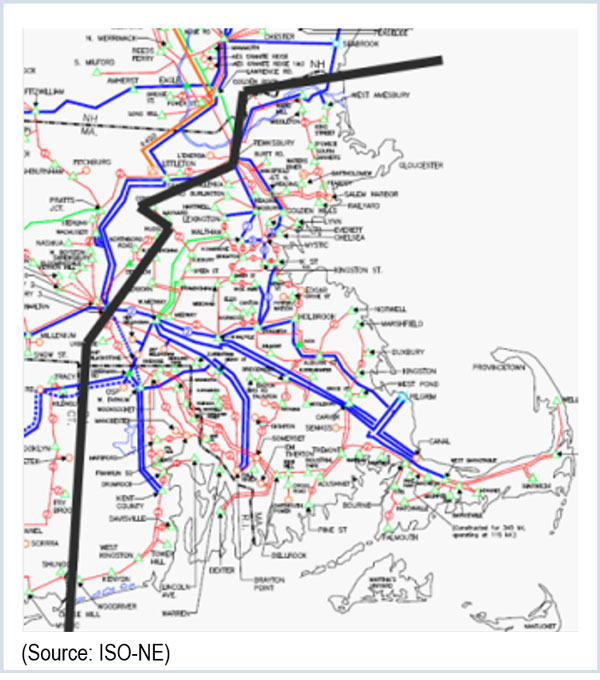By William Opalka
ISO-NE has proposed two new capacity zones for Forward Capacity Auction 10 next year (ER15-1462).
The petition filed with the Federal Energy Regulatory Commission on April 6 reflects where the RTO expects transmission constraints to be most severe in the 2019-2020 delivery year. ISO-NE requested that FERC approve the proposed zones by May 29, before the June 1 deadline for qualifying existing capacity and submission of de-list bids.
One new potential zone is Southeastern New England (SENE), a combination of the existing Northeastern Massachusetts/Boston zone with Southeastern Massachusetts/Rhode Island. The other new zone, Northern New England (NNE), is a combination of the existing Maine, New Hampshire and Vermont load zones.
ISO-NE said these are “potential” new capacity zones. “At this phase of the zonal development process, the appropriate boundaries are simply being defined so that if these capacity zones are needed, they can be modeled in the auction,” said Alan McBride, director of transmission strategy and services.
No changes are proposed with the current West-Central Massachusetts or Connecticut zones.
SENE is proposed as an import-constrained capacity zone, while NNE is proposed to be export-constrained.
For FCA 9 the zones were: NEMA/Boston, SEMA/RI, Connecticut and Rest-of-Pool, which includes West-Central Massachusetts, Vermont, Maine and New Hampshire.
The RTO conducts an annual assessment of transmission transfer capability to identify system weaknesses as part of its New England Regional System Plan. Modeling showed the effects of recent and pending plant closures, including the Vermont Yankee nuclear plant last year and the 2017 planned mothballing of the 1,535-MW Brayton Point generation station in Massachusetts.
Transmission upgrades planned for eastern Massachusetts will allow power to move more freely within the proposed zone, but constraints were found where the new, larger zone connects to the others. “These constraints are such that new, qualified resources located in either zone would be helpful in addressing the overall constraints. That is, new resources in SEMA/RI would be helpful in unloading the constraints,” according to the filing.
In FCA 9, SEMA/RI did not have enough capacity resources bid into the auction. (See Prices up One-Third in ISO-NE Capacity Auction.)
In NNE, power flow studies indicate an existing transmission interface is located along the southern borders of New Hampshire and Vermont and the northern border of Massachusetts. Without Vermont Yankee and Brayton Point, “the North-South flows are now forecast to be more concentrated along the lines connecting southeastern New Hampshire with eastern Massachusetts,” the RTO said.
The Connecticut zone was unchanged due to new resources that entered the zone in FCA 9. (See Exelon, LS Power Join CPV in Adding New England Capacity.)



